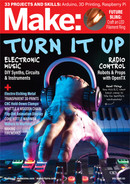
On
February 24, 2022 at about 4:50 a.m.,
we woke up, my wife Svitlana and I,
and argued whether the sounds we were hearing
were a rocket or not. Then our kids came into the
bedroom and we covered them with blankets.
We started reading messages and news. While
calming the children, we also explained to them
that a war had started and that we were going to
get them to a safe place.
We understood that the battle for Kyiv would
last long so we decided to move the kids as far
away from rockets as we possibly could. Within
hours, a huge number of people in cars began
to flee the city and created many traffic jams.
We waited and visited some friends and checked
on others by phone. By 9:00 p.m., the traffic was
much better so we left Kyiv for Lviv in the west.
The trip took 26 hours instead of the usual 6 or 7.
After two days, I came back to Kyiv with a friend
who is now in public affairs for Ukraine’s army
reserves, the Territorial Defense Forces. Svitlana
and the children crossed the Poland border
and were picked up by our friend in Germany,
where they still live. I remained in Kyiv, keeping
my computer reseller and consulting business
running. I slept on a mat in the hallway for many
nights because that was the safest place for me. I
would also spend as much time as I could helping
volunteers and networks of makers. For those
of us not fighting the war, we helped in any way
we could, connecting to other people and finding
resources for them.
When we started producing Maker Faire in
Ukraine in 2015, we hoped to organize a volunteer
network of makers. We produced 15 Mini
Maker Faires in five cities, a two-day camp for
makerspace leaders, and had a plan to produce a
maker-hacker camp for summer 2022. The goal
is to change the culture, which Svitlana describes
as characteristic of the Soviet era: “very low trust,
low initiative, low ideas rate.” She believes that
Ukraine is “very hungry for ideas, startups, new
forms of education, especially because schools
and teachers are still old school.”
DEFENSE EFFORTS
War is not something new for Ukraine. We have
been in a state of war since 2014 and we were
confident that a big war was coming. Our country
has been in a weakened state, and many of our
institutions were influenced by Russia. What was
necessary was a huge volunteer movement to
help support the defense of our country by the
armed forces.
When the war began, many of us decided
to take things into our own hands, if just to
overcome the fear and confusion caused by the
invasion and lack of information. What emerged
was a self-organizing effort, not dependent on
our institutions. As makers, we can respond to
requests from relatives in unoccupied regions,
or from friends in the Armed Forces of Ukraine
(AFU) or the Territorial Defense. We can use
the tools we have or reach out to people in the
network who have the competence or tools to
help out.
Last fall, we conducted a survey of 196
Ukrainian makers and found their most urgent
need was new training, and their strongest
interest by far was 3D printing. There are now
about 18 makerspaces across Ukraine, many
which have struggled for funding during the
war. A makerspace in Kyiv was hit by a rocket in
November 2022; we lost equipment such as 3D
printers but no one was hurt when the explosion
hit in the early morning hours.
A large number of makers were drafted into
the army where most of them keep improving
processes, developing and iterating new tech,
building trust in their team, and caring a lot about
what they do. Civilian makers are helping to
supply our defense with much-needed equipment
as well as modifying or repairing devices.
15
make.co
Volodymyr Babii, Yuri Vlasyuk
A Kyiv shop burning near a makerspace after a rocket hit
M85_014-21_Ukraine_F1.indd 15M85_014-21_Ukraine_F1.indd 15 4/11/23 11:13 AM4/11/23 11:13 AM
..................Content has been hidden....................
You can't read the all page of ebook, please click here login for view all page.
